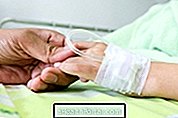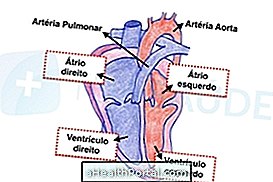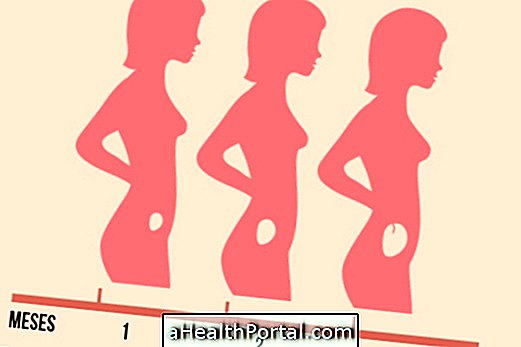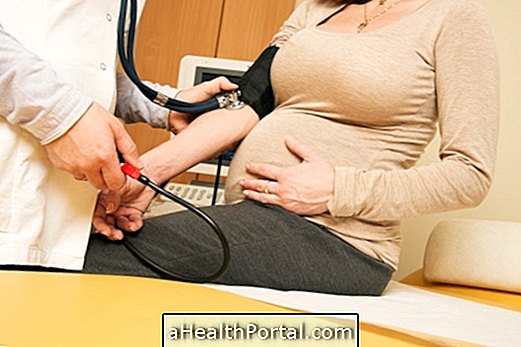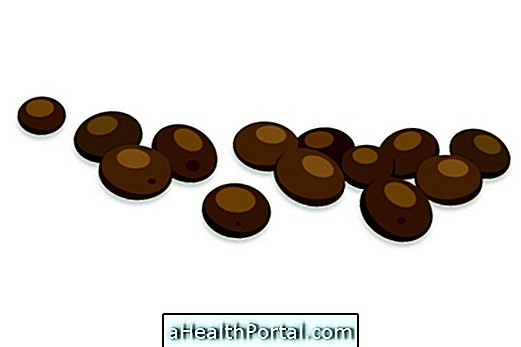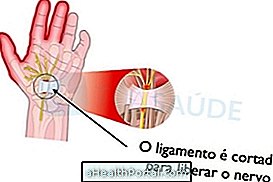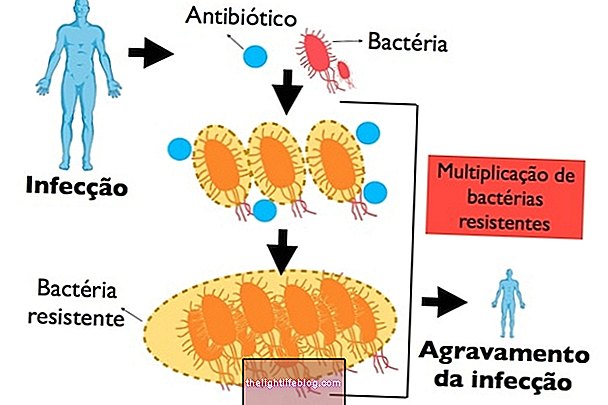Bacterial endocarditis is an inflammation that affects the internal structures of the heart, such as valves and tissue that lines the heart, due to the presence of bacteria or fungi that reach the heart through the bloodstream.
The use of injectable drugs, mouth or tongue piercing, or dental treatment without prior antibiotic therapy may increase the chance of bacterial endocarditis. However, the most common cause is having some cardiac malformation or an injury to the heart valve.
There are two types of bacterial endocarditis:
- Acute bacterial endocarditis : This type of endocarditis is usually caused by the bacterium Staphylococcus aureus, it is more common in people who use intravenous drugs, since this bacterium is present on the surface of the skin, and the constant 'stings in the skin' with dirty syringes allow its arrival into the bloodstream. Acute bacterial endocarditis evolves rapidly, affecting the brain, lungs, liver and kidneys, leading to death in as little as 6 weeks.
- Subacute bacterial endocarditis: This endocarditis is usually caused by Streptococcus viridans, Enterococcus sp., Staphylococcus sp . or gram-negative bacilli. It evolves more slowly, and can persist for up to 1 year. Subacute endocarditis is more common in people who have piercings in the mouth or cancer of the digestive system, especially in cases of bowel cancer.
The diagnosis of bacterial endocarditis can be made through examinations such as echocardiogram, which is a type of ultrasound in the heart, and through blood tests to identify the presence of bacteria in the bloodstream, characterized by bacteremia. Learn more about bacteremia.
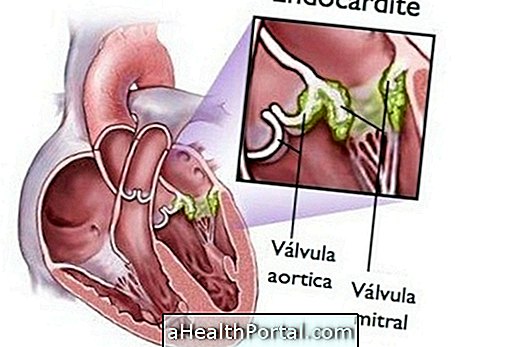
Symptoms of bacterial endocarditis
The symptoms of acute bacterial endocarditis may be:
- High fever;
- Chest pain;
- Shortness of breath;
- Cough;
- Hemorrhage on the palms of the hands and soles of the feet.
In subacute endocarditis, the symptoms are usually:
- Low fever;
- Chills;
- Night sweats;
- Pain in muscles and joints;
- Easy fatigue;
- Headache;
- Shortness of breath;
- Lack of appetite;
- Weight loss;
- Small painful nodules on the fingers or toes;
- Rupture of small blood vessels in the whites of the eyes, the roof of the mouth, the inside of the cheeks, the chest or the fingers or toes.
If these symptoms are present it is advisable to go to the emergency room as soon as possible because endocarditis is a serious illness that can lead to death quickly.
Because tooth problems can cause endocarditis
One of the main causes of endocarditis is the absence of antibiotics 10 days before a dental treatment, such as tooth extraction or caries treatment, for example. In these cases, caries bacteria and those present naturally in the mouth can be transported through the blood until they accumulate in the heart, where they cause inflammation of the tissues.
How is endocarditis treated?
The treatment of endocarditis is done with the use of antibiotics, which can be oral or applied directly to the vein, according to the microorganism identified in the blood. In more severe cases where there is no good antibiotic result and depending on the size of the infection and its location, surgery is indicated to replace the heart valve with prostheses.
The prophylaxis of endocarditis is especially made in people who are at high risk of developing endocarditis, such as:
- People with artificial valves;
- Patients who have had endocarditis;
- People with valve disease and who have already had a heart transplant;
- Patients with congenital heart disease.
Before any dental treatment the dentist should advise the patient to take 2 g of amoxicillin or 500 mg of Azithromycin at least 1 hour before treatment. In some cases the dentist should advise the use of antibiotics for 10 days before starting dental treatment. Learn more about treatment for bacterial endocarditis.
